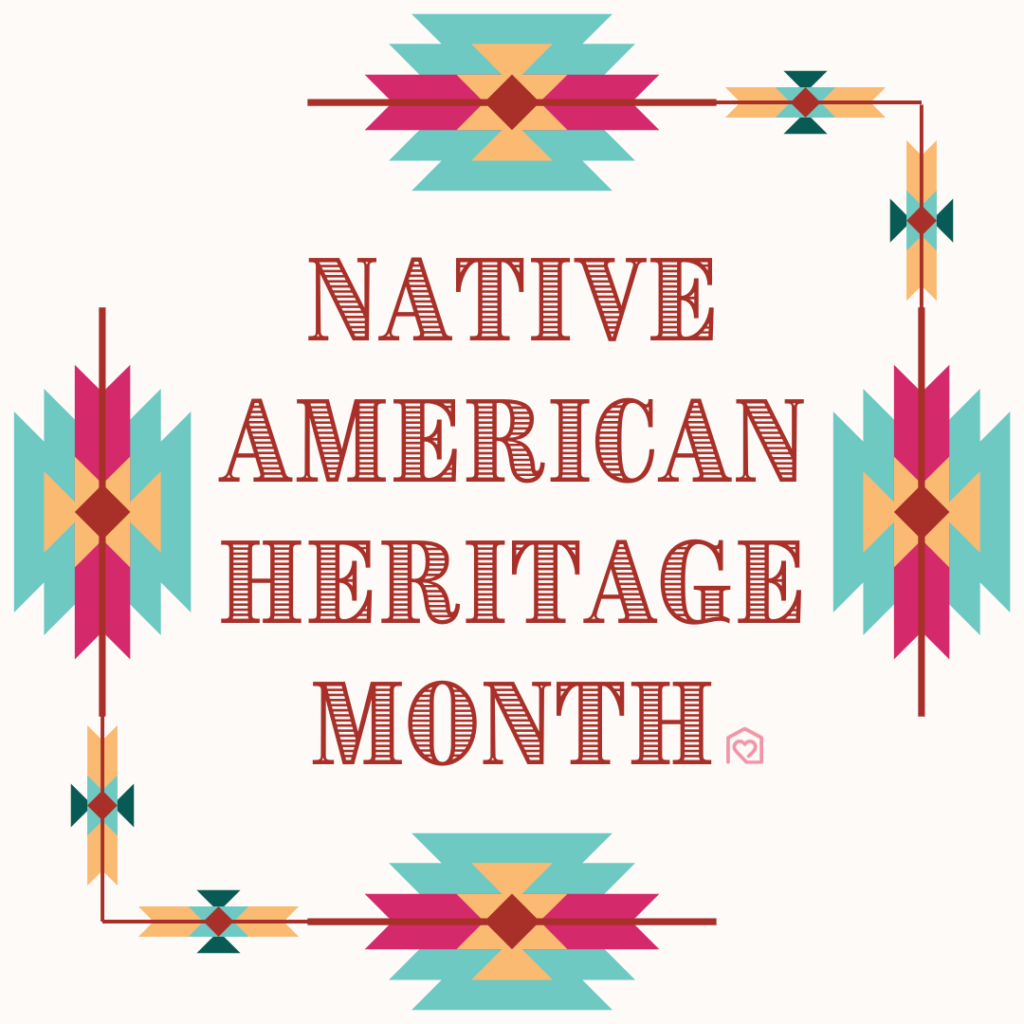Indigenous Communities and DV

At Genesis, we often will speak to the fact that domestic violence knows no single race, religion, ability, socioeconomic status, or culture. However, it is important to recognize that while domestic violence is pervasive in all communities, some communities see greater rates of domestic violence and are impacted by culturally-situated forms of abuse. This is especially true for American Indian and Alaskan Native communities*.
American Indian and Alaskan Native communities overall experience higher rates of violence as compared to other demographics. With 50% of women experiencing intimate partner violence. Despite these alarming statistics, often the voices of Indigenous communities are yielded invisible and the unique dynamics of domestic violence are not widely understood. In honor of National American Indian Heritage Month, we hope to help increase awareness of domestic violence in these communities that extends beyond just the month of November.
History and Colonization
Domestic violence was not traditionally seen in Native/Indigenous communities, rather was introduced by European colonizers through repeated violence and persecution. Colonization can be defined as the act of domination through the subjugation of others through violent force. Domestic violence mirrors this pattern of domination and violence between intimate partners. The effects of colonization, similar to the effects of domestic violence, are pervasive and long-lasting and have resulted in Intergenerational Traumas.
Intergenerational Trauma is the understanding that trauma and the effects of trauma can be passed down from one generation to the next. These traumas are passed down through both socialization and epigenetics and are important puzzle pieces for understanding the dynamics of domestic violence in Native/Indigenous communities as well as the hesitancy of many victims to reach out for support and services.
Cultural Abuse
All forms of domestic violence, physical, verbal, emotional, and sexual, are present in American Indian and Alaskan Native communities. However, special attention is needed on understanding cultural abuse and specific forms of abuse that are unique to these communities.
Cultural/Spiritual Abuse is an often lesser recognized form of emotional abuse that involves the manipulation of cultural and spiritual practices/beliefs on the part of the abuser to control their partner. Spirituality and Culture are heavily intertwined in most Native/Indigenous communities and forms of cultural abuse serve to isolate and gaslight victims. The StrongNative Helpline, provides several examples of cultural/spiritual abuse specific to these communities, including:
- Telling you that you’re not “Native enough”, or if your partner is non-Native, that you’re “too Indian”
- Uses hurtful stereotypes to put you down (“Indians are drunks, lazy,” etc.)
- Prevents you from participating in ceremonies, pow wows, feasts
- Uses tribal membership against you (“My tribe won’t let you…”)
- Tells you that you’re not allowed to drum, dance, sing, fast or otherwise participate in traditions because of your gender
While cultural-abuse is devastating to victims, spirituality can also serve as a protective factor and source of healing and strength for victims of domestic violence. Reconnecting to one’s community or tribe through traditional healers, chants/prayers, drums, etc. can help renew connection to the larger community as well as internally.
Two-Spirit
According to the Indian Health Service, “Traditionally, American Indian two-spirit people were male, female, and sometimes intersexed individuals who combined activities of both men and women with traits unique to their status as two-spirit people.” As such, there is no one single definition of Two-Spirit. While a traditional component in many native communities, this more fluid understanding of gender, sexuality, and gender roles is often discriminated against and misunderstood in the United States. As such, abusive partners may threaten to disclose to others that their partner is two-spirit or use hurtful stereotypes regarding those who identify as two-spirit to degrade and “put-down” their partner. Abusers may also prevent partners from behaving, dressing, or appearing in a way that is congruent with their gender/sexual identity as a means of control. Furthermore, while many victims are hesitant to reach out to support services, victims who identify as two-spirit are even less likely to seek services out of fear of discrimination.
Next Steps
Resources and support for American Indian and Alaskan Native communities are severely limited and when present often insufficient to meet the needs of these diverse communities. Services targeting American Indian and Alaskan Native populations must demonstrate awareness regarding the impacts of colonization/intergenerational trauma, the role of cultural/spiritual abuse, and the barriers to accessing services. As such, what is needed are:
- Continued, year-long conversations on the ways in which American Indian and Alaskan Native communities are impacted by violence and domestic violence
- Greater attention to how agencies can better serve diverse populations, especially American Indian and Alaskan Native populations
- Increased shelters and funding for agencies that support and provide services to Native/Indigenous communities
- Greater autonomy and respect for Native/Indigenous communities and tribes, including in regards to judicial powers
If you are interested in learning more about the the ways in which domestic violence and violence overall impact American Indian and Alaskan Native communities I encourage you to check out these resources:
- StrongHearts Native Helpline- https://strongheartshelpline.org/
- National Indigenous Women’s Resource Center- https://www.niwrc.org/
*Notes that this term is an overgeneralization and does not highlight the diverse communities and tribes that often are associated with this label. I cited the language used throughout the StrongHearts Native Helpline site but want to stress that when possible it is important to respect and use individuals preferences in regards to how individuals/communities wish to be addressed.
Written by Emma Coleman, Lead Childcare Coordinator
